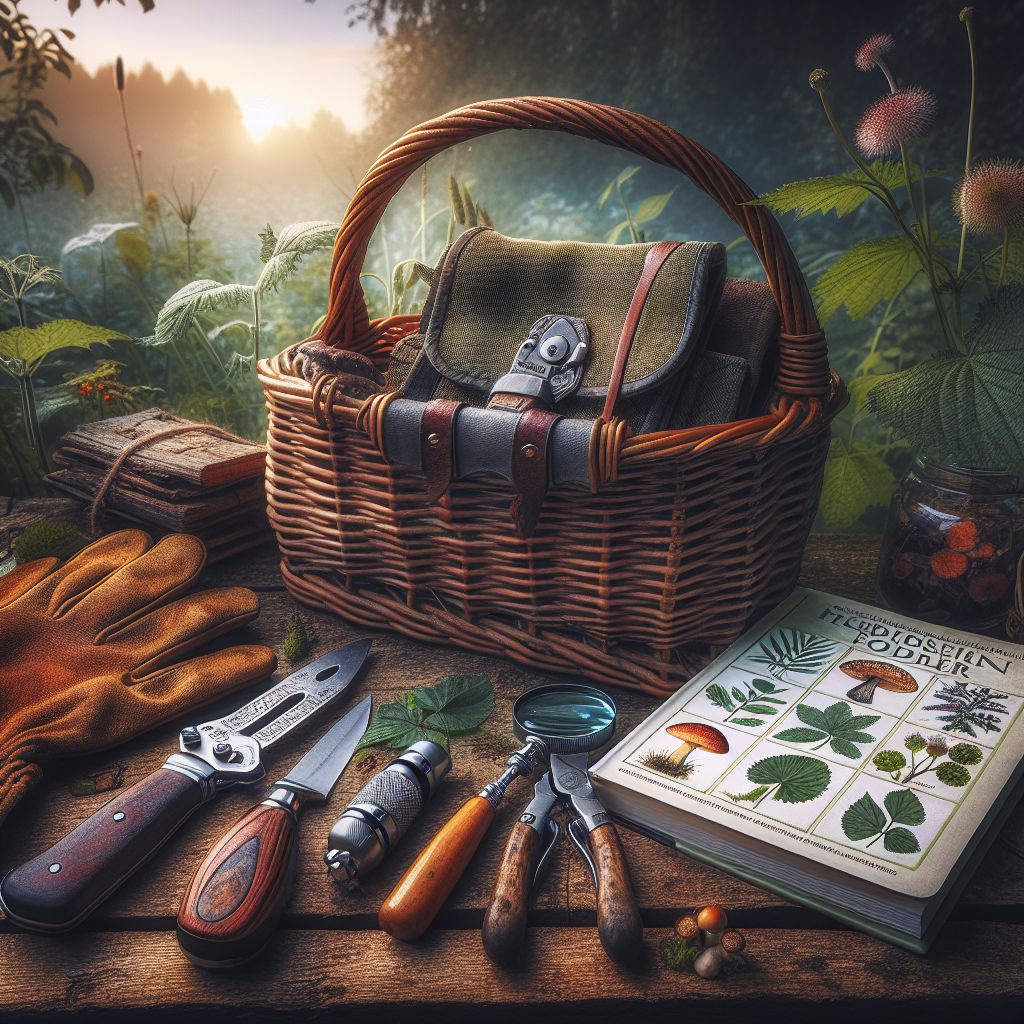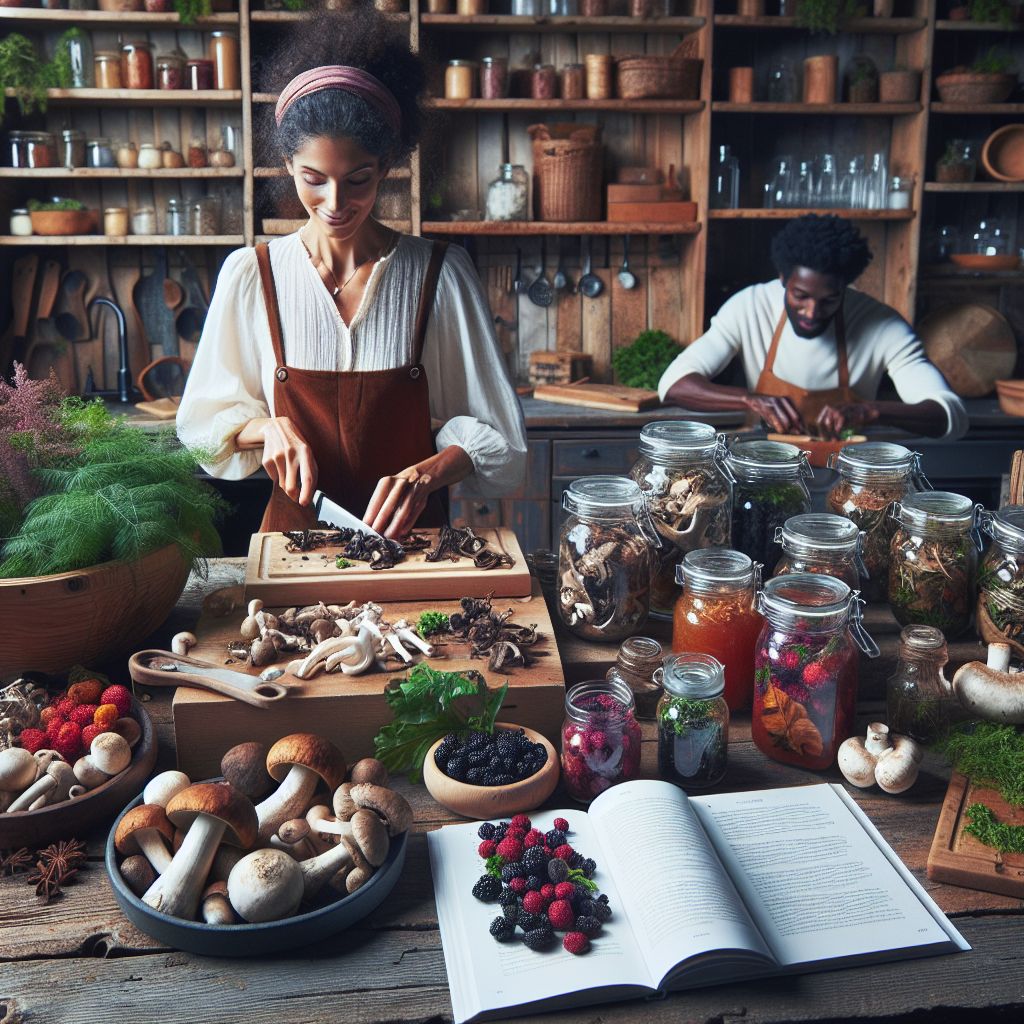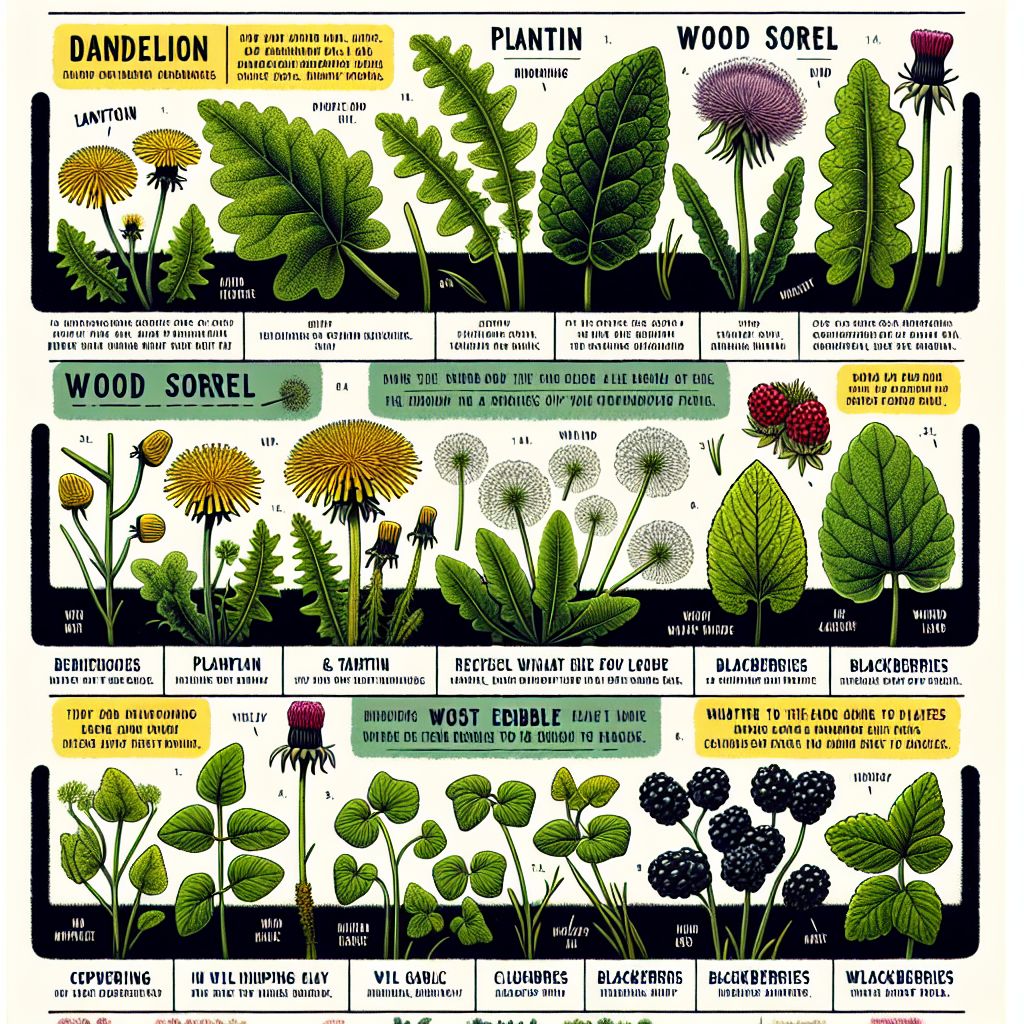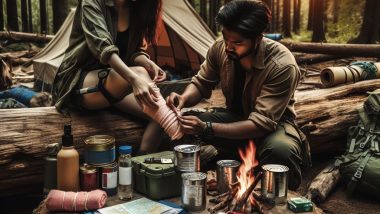Main Points
-
Recognizing edible plants involves understanding the plant’s look, environment, and season.
-
Foraging responsibly involves only taking what you require and respecting the ecosystem.
-
A simple foraging kit should contain a field guide, a durable knife, bags or baskets, and gloves.
-
Typical edible plants are dandelions, wild berries, and cattails, each with unique preparation methods.
-
Foraging can be conducted sustainably by comprehending plant life cycles and foraging regulations.

Foraging Basics: Surviving on the Generosity of Nature
Embarking on the journey of foraging is like uncovering a secret pantry filled by nature itself. It’s a skill that can feed you, connect you with the earth, and even become a satisfying pastime. As we explore the fundamentals, bear in mind that successful foraging is about more than just locating food; it’s about becoming a conscious and respectful member of an ecosystem.
5 Foods Every Prepper Should Be Aware Of
When you’re a beginner, it’s important to get to know a few plants that are both plentiful and simple to recognize. These mainstays can form the foundation of your foraging routine:
-
Dandelions: Dandelions are a common sight and can be found in most places. All parts of the plant can be eaten.
-
Wild Berries: Wild berries such as blackberries, raspberries, and strawberries are easily identifiable and can be found in many places.
-
Lamb’s Quarters: Lamb’s Quarters, a relative of spinach, is full of nutrients and can be found growing in soils that have been disturbed.
-
Cattails: Cattails, which can be found near wetlands, have edible roots, shoots, and pollen heads.
-
Wild Nuts: Wild nuts such as acorns, walnuts, and hickory nuts can be a good source of food if prepared correctly.
Knowing Your Terrain: Where to Start Looking
Your local environment is a treasure trove of edible plants, but you need to know where to look. Forest edges, meadows, and riverbanks are hotspots for biodiversity. However, be cautious of areas that may be polluted or sprayed with herbicides, like roadsides and industrial areas. Always seek out pristine environments for the cleanest, healthiest harvests.
Collecting Conscientiously: Guidelines for Ethical Foraging
Foraging isn’t only about what you get out of it, but what you put back into it to ensure that the plants we enjoy will be around for future generations. Here are a few guidelines for ethical foraging:
-
Only take what you will use and use what you take.
-
Only take a small amount of what is available, leaving enough for wildlife and for the plant to continue to grow.
-
Be aware of endangered species and do not forage them.
-
Know the local laws and regulations about foraging in your area.
By following these guidelines, you can help ensure the future of foraging and protect the delicate balance of our ecosystems.

Must-Have Tools for the Savvy Forager
Foraging can be a fun and rewarding experience, especially when you have the right tools. Here are the essentials you should have before you go foraging:
What Should You Pack in Your Forager’s Toolkit?
Having a well-prepared forager’s toolkit is essential. Here’s what you should include:
-
Local field guide: Consider this your plant identification bible, complete with images and details of the edible plants in your area.
-
Durable knife: A knife is a must for cutting stems or digging up roots.
-
Gathering bags or baskets: To store your haul. Choose breathable materials to keep the plants fresh.
-
Gloves: Keep your hands safe from thorns and rough plant matter.
-
Notepad and pen: To jot down notes on locations and the conditions of plants.
Armed with these tools, you’re ready to begin your foraging journey. Keep in mind, the right tool not only makes the task easier, but also helps to lessen damage to the plants and their environment.
Playing it Safe: Dealing with Dangers in the Wilderness
Like all outdoor pursuits, foraging has its dangers. Always let someone know where you’re headed and when you plan to be back. Stay alert to your environment, including possible threats such as toxic plants, wildlife, and rough ground. Above all, never consume anything unless you are completely sure of what it is and that it’s safe to eat.
Foraging is a rewarding way to connect with nature and add fresh, healthy foods to your diet. As you become more skilled, you’ll feel more confident, and you’ll be able to forage for a wider variety of foods. Keep in mind that every foraging trip is a chance to learn something new, so stay curious, stay safe, and have fun.

Foraging for Vegetarian Preppers: A Guide to Identifying Edible Plants
Picture yourself strolling through a dense forest or a green field, your eyes darting around the area in search of something to eat. This is the world of foraging, where Mother Nature provides a wealth of edible plants that can enhance your meals with new flavors and nutrients. The secret to accessing this world is learning how to recognize these gems.
Leafy Greens: Beyond the Salad Bowl
Leafy greens are among the easiest to identify and gather. Many people are already familiar with dandelion greens, a common sight in most yards and fields. Not only can you eat them, but they’re also a great source of vitamins A and C. Another edible green that’s often found growing alongside dandelions is plantain. Its wide leaves are most delicious when they’re young and tender. Here are some more to keep an eye out for:
-
Purslane: This succulent has a tangy, lemon-like taste and is rich in omega-3 fatty acids.
-
Lambsquarters: This plant, which tastes a lot like spinach, is packed with vitamins and minerals.
-
Wild Mustard: The leaves of this plant can be used to add a spicy flavor to salads or cooked like collard greens.
These greens not only add a unique taste to your meals but are also a free source of nutrition that can often be found right outside your door.
Scrumptious Berries: Sweets from Mother Nature
In the world of foraging, berries are some of the most satisfying treasures. They’re tasty, healthy, and often plentiful. Wild strawberries, for instance, may be tinier than the ones you buy at the store, but they’re also much more sugary and bursting with flavor. Blueberries and raspberries can also be discovered in the wild, and they’re loaded with antioxidants. Just remember, always be sure of what you’re picking—some berries can be poisonous.
Roots and Tubers: The Earth’s Secret Harvest
Hidden under the earth’s surface is another group of edibles: roots and tubers. Wild carrots, also called Queen Anne’s lace, are one such plant, but they must be identified with caution to avoid mistaking them for poisonous doppelgangers. Jerusalem artichokes and wild onions are also prized discoveries, offering flavors that can elevate any meal. Unearthing roots requires a bit more labor and care to ensure the plant can continue to grow.

Cleaning and Storing Your Finds: Bringing the Wild to Your Kitchen
After you’ve collected your wild edibles, the next step is to get them ready to eat. It’s critical to clean them properly to get rid of any dirt, bugs, or possible contaminants. Usually, a good rinse under running water is enough, but some things may need to be soaked or scrubbed.
How to Clean and Cook Wild Edibles
The steps you need to take to prepare wild foods can be quite different from those you would use for store-bought fruits and vegetables. For example, wild greens can be tougher and might need to be blanched to soften them up before you add them to your recipes. Berries usually just need to be washed before you can eat them, but you can also preserve them by making them into jams or freezing them. And when it comes to roots, you’ll want to scrub them well to get rid of any dirt. For more detailed guidance on preparing for a self-sufficient lifestyle, you might want to explore this comprehensive guide to building your self-sustained home.
Staying Safe: Keeping Clear of Possible Dangers
Safety should be your number one priority when you’re foraging. This doesn’t just mean making sure you’ve correctly identified what’s edible, it also means being conscious of the environment. Stay away from plants that are near roads or industrial areas as they may have been exposed to pollutants. There’s also a risk that you may misidentify a plant and eat something toxic. If you’re unsure, it’s always better to double-check with multiple sources or an expert before you eat anything.
Seasonal Foraging
Foraging isn’t only limited to the spring or summer months; every season brings its own special bounty. Knowing what’s in season at different times of the year can help you plan your foraging trips and make sure you have a steady supply of wild foods.
Springtime Bounty: The First Greens and Sprouts
Spring symbolizes rebirth, and for those who forage, it’s a treasure trove of fresh sprouts and early greens. Keep an eye out for young nettles (remember to wear gloves!), which can be prepared like spinach, and the vibrant green tips of spruce and fir trees, which can be used to brew a tea with a hint of citrus. Fiddlehead ferns are another spring treat, but make sure to harvest them sustainably, taking only a few from each cluster to allow the plant to continue to thrive.
Summer’s Bounty: A Plethora of Berries and Greens
With the arrival of the warm season, the foraging landscape bursts with diversity. Berries ripen, and wild greens are at their peak. This is when you should be gathering blackberries, raspberries, and wild greens like sorrel and chickweed. Summer is also the best time to forage for wild herbs such as mint and lemon balm, which can be dried and used all year round.
Fall Bounty: Nuts and Late-Season Foraging
Fall is a forager’s dream, especially for nuts. Trees like walnuts, hickory, and chestnuts drop their bounty, providing a rich source of protein and fats. This is also the time for late-season mushrooms, such as hen-of-the-woods and puffballs, but be extremely cautious—mushroom foraging should only be done with expert knowledge or guidance, as some are deadly poisonous. The key to foraging in fall is to be quick and efficient; as the season progresses, competition from wildlife increases, and the window for peak ripeness is narrow.
Winter’s Roots: Digging Deep for Sustenance
Even in the coldest months, foraging can provide you with food. You can dig up roots like burdock and wild carrot from the frozen ground, and you can brew evergreen needles into teas rich in vitamin C. Winter foraging can be more difficult, but it gives you the chance to connect with the landscape during its quietest period and to appreciate the year-round bounty of nature.
FAQ
We are here to answer all your burning questions and make sure you are ready to get out there and start foraging.

What are the best wild edibles for beginners to identify?
If you’re just starting out, it’s best to stick with easy-to-identify edibles like dandelions, plantains, and wild berries like blackberries and raspberries. These are not only common, but they also have unique characteristics that make them hard to mistake for non-edible plants. However, you should always confirm with a trustworthy field guide or someone with foraging experience.
How do I forage in a sustainable manner?
Here are some guidelines to follow for sustainable foraging:
-
Harvest only what you need, leaving enough for wildlife and other foragers.
-
Harvest in a sustainable manner that allows the plant to continue growing, such as taking only a few leaves from each plant.
-
Avoid foraging in areas that have been over-harvested to allow plant populations to bounce back.
-
Spread your foraging over a wide area to avoid putting too much stress on individual plant communities.
Is urban foraging possible?
Yes, foraging in urban environments is not only possible, but it can also be quite productive. Many parks, community gardens, and even cracks in the sidewalk are home to edible plants. Just be aware of potential contaminants like pesticides and vehicle exhaust, and always check local regulations as some areas may have restrictions on foraging.
What should I do if I’m not sure whether a plant is edible?
If you’re unsure about a plant’s edibility, do not eat it. Consult multiple resources, including field guides, local foraging groups, or knowledgeable individuals. When learning, it’s better to err on the side of caution.
Is foraging legally restricted?
Indeed, there can be legal limitations on foraging, which vary depending on the location. Some public lands may necessitate permits, while others may ban foraging entirely. Always look into the regulations in your region and secure any required permits prior to foraging.
Foraging is an enriching way to bond with nature, enhance your meals, and foster a greater respect for the environment. With the appropriate understanding, equipment, and reverence for nature, anyone can become a skilled forager. As you embark on your journey, keep in mind the significance of sustainable methods, safety, and the thrill of exploration. Enjoy your foraging!


